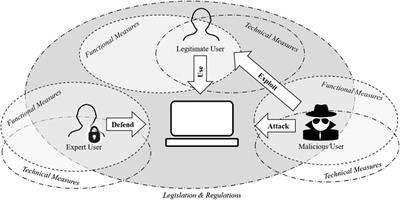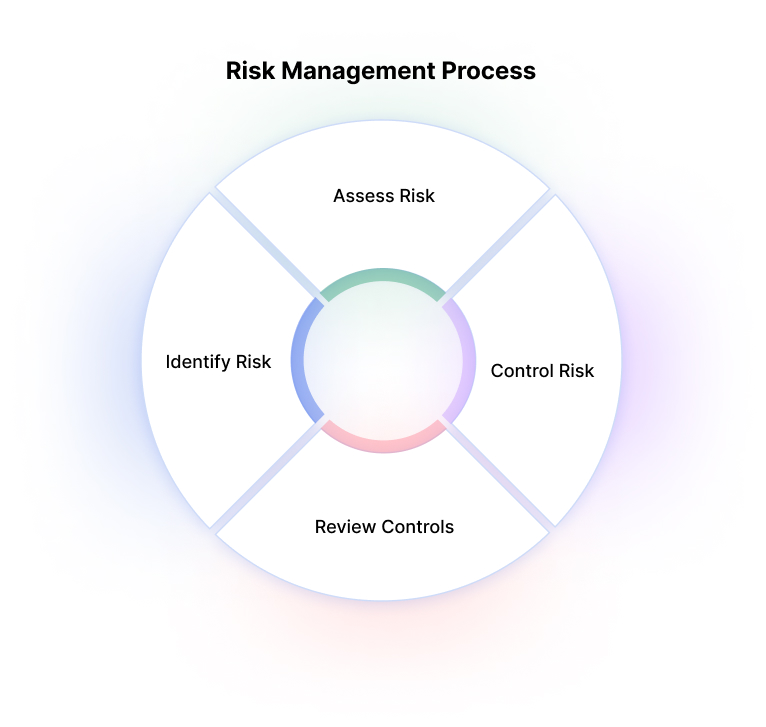
Importance of Cybersecurity for Organizations
1. Understanding the significance of cybersecurity
Cybersecurity has become a critical aspect of business operations in today’s digital age. Organizations face numerous cyber threats, such as data breaches, ransomware attacks, and phishing attempts. Strong cybersecurity measures are essential to protect sensitive information, maintain business continuity, and safeguard customer trust.
Cybersecurity involves implementing practices and technologies that defend against unauthorized access, data theft, and disruptions caused by malicious actors. It encompasses various areas, including network security, data protection, employee awareness, and incident response planning.
2. Impact of cyberattacks on organizations
The consequences of a cyberattack can be severe and far-reaching. Organizations face financial losses, reputational damage, legal liabilities, and potential regulatory penalties. Data breaches can result in the theft of intellectual property, customer data, or confidential information, causing significant harm to both the organization and its stakeholders.
Moreover, cyberattacks can disrupt business operations, leading to downtime, lost productivity, and damage to critical systems. These disturbances can have a cascading effect, impacting customers, partners, and suppliers.
To mitigate these risks, organizations must adopt effective cybersecurity practices. This includes investing in robust infrastructure, educating employees about best security practices, implementing secure access controls, regularly updating software and systems, and conducting thorough risk assessments.
By prioritizing cybersecurity, organizations can reduce vulnerabilities, safeguard their assets, maintain trust with stakeholders, and protect their long-term

Key Factors Influencing Organizations’ Decision to Adopt Cybersecurity
1. Financial resources and budget allocation
One of the top factors that determine whether an organization will adopt cybersecurity is its financial resources and budget allocation. Implementing robust cybersecurity measures can be costly, requiring investments in technology, infrastructure, and skilled personnel. Organizations that have adequate financial resources and are willing to allocate a significant budget to cybersecurity are more likely to prioritize and invest in protecting their data and systems.
2. Regulatory compliance and legal requirements
With the increasing number of data breaches and cyber threats, governments and regulatory bodies have imposed stringent compliance and legal requirements on organizations. These regulations often dictate the minimum cybersecurity standards that organizations must adhere to. Failure to comply can result in severe penalties and reputational damage. Therefore, organizations operating in regulated industries or those dealing with sensitive data are more inclined to adopt cybersecurity to meet these legal obligations and maintain their reputation.
3. Risk assessment and threat landscape
Organizations conduct risk assessments to evaluate the potential impact and likelihood of cyber threats. Understanding the specific risks they face, such as data breaches, intellectual property theft, or ransomware attacks, can significantly influence their decision to adopt cybersecurity measures. Organizations that identify a high level of risk or operate in industries prone to cyber threats are more likely to invest in cybersecurity to mitigate these risks and protect their sensitive information.
4. Organizational culture and leadership
The organizational culture and leadership play a crucial role in determining the adoption of cybersecurity. Organizations with a strong culture of security awareness, where employees are educated about cyber risks and are encouraged to prioritize cybersecurity, are more likely to adopt robust security measures. Additionally, strong leadership that recognizes the importance of cybersecurity and prioritizes it within the organization can drive the adoption of cybersecurity initiatives.
5. Previous cyber incidents
Experiencing a cyber incident, such as a data breach or malware attack, can be a wake-up call for organizations to invest in cybersecurity. These incidents can highlight vulnerabilities and weaknesses in the organization’s security posture, prompting them to take immediate action to prevent future incidents. Organizations that have previously faced cyberattacks are more likely to adopt cybersecurity measures to enhance their resilience and protect their assets.

Organizational Culture and Leadership
1. Organizational culture and its impact on cybersecurity adoption
The culture within an organization plays a crucial role in determining whether it will adopt cybersecurity practices. A strong cybersecurity culture ensures that employees are aware of the importance of security measures and are committed to following them. It promotes a proactive approach to security instead of reactive responses to breaches.
Key factors that influence the impact of organizational culture on cybersecurity adoption include:
- Employee mindset: An organization with a culture that values security will have employees who understand their role in protecting sensitive information. They will be more likely to adhere to security protocols and report any potential threats.
- Communication and training: Clear communication of security policies and regular training sessions to educate employees about the latest threats and best practices are essential for building a security-conscious culture.
2. Role of leadership in promoting a culture of cybersecurity
Effective leadership is essential in fostering a culture of cybersecurity within an organization. Leadership must champion cybersecurity as a top priority and lead by example in implementing security practices.
Key factors that determine the role of leadership in promoting a culture of cybersecurity include:
- Commitment to security: When leaders prioritize cybersecurity and demonstrate their commitment to protecting the organization’s assets, employees are more likely to follow suit.
- Resource allocation: Leaders should allocate resources to build a robust cybersecurity infrastructure, including investing in technology, training, and hiring qualified personnel.
- Accountability and communication: Leaders should hold individuals and teams accountable for maintaining and improving cybersecurity measures. Regular communication and feedback channels ensure a constant focus on security.
By fostering a strong cybersecurity culture and providing effective leadership, organizations can significantly enhance their ability to adopt and maintain robust cybersecurity practices.

Employee Awareness and Education
1. Importance of employee cybersecurity training
One of the top factors that determine whether an organization will adopt cybersecurity measures is the level of employee awareness and education. Employees play a crucial role in maintaining the security of an organization’s digital assets, as they are often the first line of defense against cyber threats.
By providing comprehensive cybersecurity training to employees, organizations can ensure that their workforce is equipped with the knowledge and skills to detect and prevent potential cyber attacks. This training should cover topics such as identifying phishing emails, creating strong passwords, recognizing social engineering tactics, and practicing safe browsing habits.
2. Promoting a cybersecurity-conscious workforce
In addition to training, organizations should also promote a cybersecurity-conscious workforce through ongoing awareness initiatives. This can include regular communication about the latest cyber threats, tips for staying safe online, and reminders to report any suspicious activities.
Creating a culture of cybersecurity awareness within the organization is essential for maintaining a strong defense against cyber threats. By encouraging employees to be vigilant and proactive in protecting sensitive information, organizations can significantly reduce the risk of data breaches and other cybersecurity incidents.
Ultimately, employee awareness and education are key factors in determining the success of an organization’s cybersecurity efforts. By investing in training and promoting a cybersecurity-conscious workforce, organizations can greatly enhance their overall security posture and safeguard their valuable assets from potential threats.

Technological Infrastructure
1. Evaluating the existing technological capabilities
When considering the adoption of cybersecurity measures, an organization must first assess its current technological infrastructure. This evaluation helps identify any vulnerabilities or weaknesses that may exist. By understanding the existing state of technology within the organization, decision-makers can develop a tailored cybersecurity strategy that addresses specific needs and challenges.
2. Integrating cybersecurity measures into the infrastructure
Integrating cybersecurity into the organization’s technological infrastructure is crucial for protecting sensitive data and mitigating potential risks. This integration involves implementing various cybersecurity measures such as firewalls, encryption protocols, and intrusion detection systems. It also requires regular updates and patches to software and hardware to address emerging threats and vulnerabilities.
Moreover, organizations must implement robust access controls, strong authentication mechanisms, and employee training programs to strengthen cybersecurity measures further. Regular testing and auditing of the technological infrastructure are also essential to identify and rectify any gaps or weaknesses that may arise over time.
By evaluating existing technological capabilities and integrating cybersecurity measures into the infrastructure, organizations can create a secure environment and safeguard their sensitive information from cyber threats. Such measures instill confidence in customers and business partners, demonstrating a commitment to protecting data privacy and maintaining the integrity of operations.
It is important for organizations to continually monitor and adapt their cybersecurity efforts as technologies and threats evolve. By staying proactive and vigilant, organizations can stay ahead of cyber threats and maintain a strong defense against potential attacks.

Understanding the evolving threat landscape
In today’s digital world, the threat of cyber attacks is a reality that every organization must face. To determine whether your organization will adopt cybersecurity measures effectively, it’s crucial to understand the external threat landscape.
- Technology Advancements: As technology continues to advance, so do the tactics and techniques of cybercriminals. From sophisticated phishing attacks to ransomware and data breaches, organizations need to stay up to date with the latest threats to mitigate risks effectively.
- Industry-Specific Threats: Different industries face unique cybersecurity challenges. Financial institutions may be targeted for financial gain, while healthcare organizations may face data breaches due to the value of personal health information. Understanding the specific threats in your industry is essential for developing tailored cybersecurity strategies.
Incorporating threat intelligence for effective cybersecurity
Threat intelligence plays a crucial role in determining whether your organization can adopt effective cybersecurity measures.
- Proactive Risk Assessment: By regularly monitoring and analyzing threat intelligence reports, organizations can identify potential vulnerabilities and weaknesses in their security posture. This allows for proactive risk assessment and the implementation of necessary preventive measures.
- Timely Response: Threat intelligence provides real-time information about emerging threats and attack trends. This enables organizations to respond promptly, mitigating potential damage and reducing the impact of cyber attacks.
- Collaboration and Information Sharing: Sharing threat intelligence with trusted partners and industry peers helps create a collective defense against cyber threats. Collaborative efforts enhance cybersecurity measures and provide a broader perspective on the ever-evolving threat landscape.
By understanding the evolving threat landscape and incorporating threat intelligence into your cybersecurity strategy, your organization can better protect itself against cyber attacks and adopt effective cybersecurity measures.

Risk Assessment and Management
1. Conducting regular risk assessments
One of the top factors that determine whether an organization will adopt cybersecurity measures is their commitment to conducting regular risk assessments. By assessing the potential risks and vulnerabilities of their systems and data, organizations can identify the areas that require immediate attention. This helps in prioritizing resources and implementing effective cybersecurity measures to mitigate the identified risks. Regular risk assessments enable organizations to stay vigilant and proactive in addressing security threats and preventing potential breaches.
2. Implementing proactive risk management strategies
Another important factor in determining an organization’s adoption of cybersecurity is the implementation of proactive risk management strategies. This involves identifying potential risks and developing strategies to prevent, detect, and respond to cyber threats. Proactive risk management strategies may include implementing firewalls, intrusion detection systems, encryption protocols, and conducting regular security audits. Organizations that prioritize proactive risk management are more likely to stay ahead of evolving cyber threats and ensure the protection of their systems and data.
Adopting cybersecurity measures is crucial in today’s digital landscape. Organizations that prioritize risk assessment and management, conduct regular assessments, and implement proactive strategies are better equipped to protect their sensitive information and maintain the trust of their stakeholders. By investing in cybersecurity, organizations can safeguard their reputation, avoid financial losses, and maintain a competitive edge in an increasingly interconnected world.

Collaboration and Partnerships
1. Engaging with industry experts and cybersecurity providers
To ensure effective cybersecurity, organizations need to engage with industry experts and cybersecurity providers. These professionals have the knowledge and experience to assess the organization’s vulnerabilities and recommend appropriate solutions. Collaborating with experts allows organizations to stay updated on the latest cyber threats and preventive measures, enabling them to adopt the most effective cybersecurity practices.
2. Collaborating with stakeholders for shared cybersecurity responsibilities
A comprehensive cybersecurity strategy requires collaboration and shared responsibilities among all stakeholders. This includes employees, management, IT departments, and even third-party vendors. All individuals and departments must be aware of their roles and responsibilities in maintaining cybersecurity. Regular training and awareness programs can help educate employees about potential threats and how they can contribute to protecting the organization’s digital assets.
By promoting a culture of cybersecurity within the organization, everyone becomes accountable for maintaining a secure environment. This collaborative approach minimizes the risk of cyberattacks and strengthens the organization’s overall security posture.
In conclusion, collaboration and partnerships play a crucial role in determining whether an organization will adopt cybersecurity effectively. Engaging with industry experts and cybersecurity providers allows organizations to stay updated on the latest threats and preventive measures. Collaborating with stakeholders ensures shared responsibilities and promotes a culture of cybersecurity. By prioritizing these factors, organizations can enhance their cybersecurity efforts and protect themselves against ever-evolving cyber threats.
Return on Investment (ROI)
1. Calculating the ROI of cybersecurity investments
When it comes to investing in cybersecurity measures, organizations often consider the return on investment (ROI). This helps determine the financial benefits gained from the investment and whether it outweighs the costs. Calculating the ROI of cybersecurity involves evaluating factors such as the potential reduction in security incidents, the cost of implementing security measures, and the potential financial losses from a security breach. By conducting a thorough analysis, organizations can make informed decisions about the value and effectiveness of their cybersecurity investments.
2. Aligning cybersecurity with business objectives
For organizations, cybersecurity is not just a technical issue but also a strategic one. To successfully adopt cybersecurity measures, it is crucial to align them with the overall business objectives. This involves understanding the organization’s risk appetite, identifying key assets and data that need protection, and determining the potential impact of a security breach on the business. By integrating cybersecurity into the broader business strategy, organizations can ensure that their investments in cybersecurity are in line with their goals and priorities.
By considering the ROI of cybersecurity investments and aligning them with business objectives, organizations can make informed decisions about their cybersecurity measures. This not only helps protect sensitive information and mitigate risks but also ensures that the investments in cybersecurity deliver value and contribute to the overall success of the organization.

Conclusion
In conclusion, there are several key factors that determine whether an organization will adopt cybersecurity measures. These factors include the level of understanding and awareness of cybersecurity threats, the perceived value and importance of cybersecurity, the availability of resources and budget, the regulatory requirements, and the organizational culture.
1. Recap of the key factors determining cybersecurity adoption
Understanding the key factors that determine cybersecurity adoption is crucial for organizations to effectively protect themselves from cyber threats. It starts with a clear understanding of the potential risks and the consequences of a security breach. Organizations also need to recognize the value of cybersecurity and the importance of protecting their assets, including customer data and intellectual property. Adequate resources and budget need to be allocated to implement effective security measures. Compliance with regulatory requirements is another driving factor for adopting cybersecurity measures. Finally, the organizational culture plays a significant role, as a strong security culture promotes a proactive and vigilant approach to cybersecurity.
2. Developing a comprehensive cybersecurity strategy
To ensure successful adoption of cybersecurity measures, organizations need to develop a comprehensive cybersecurity strategy. This strategy should include risk assessments, regular security audits, employee training and awareness programs, incident response plans, and continuous monitoring and improvement of security controls. Collaboration with cybersecurity professionals and technology vendors can also help organizations stay updated on the latest threats and technologies. By taking a proactive approach and implementing a comprehensive cybersecurity strategy, organizations can better protect themselves from cyber threats and safeguard their valuable assets.




